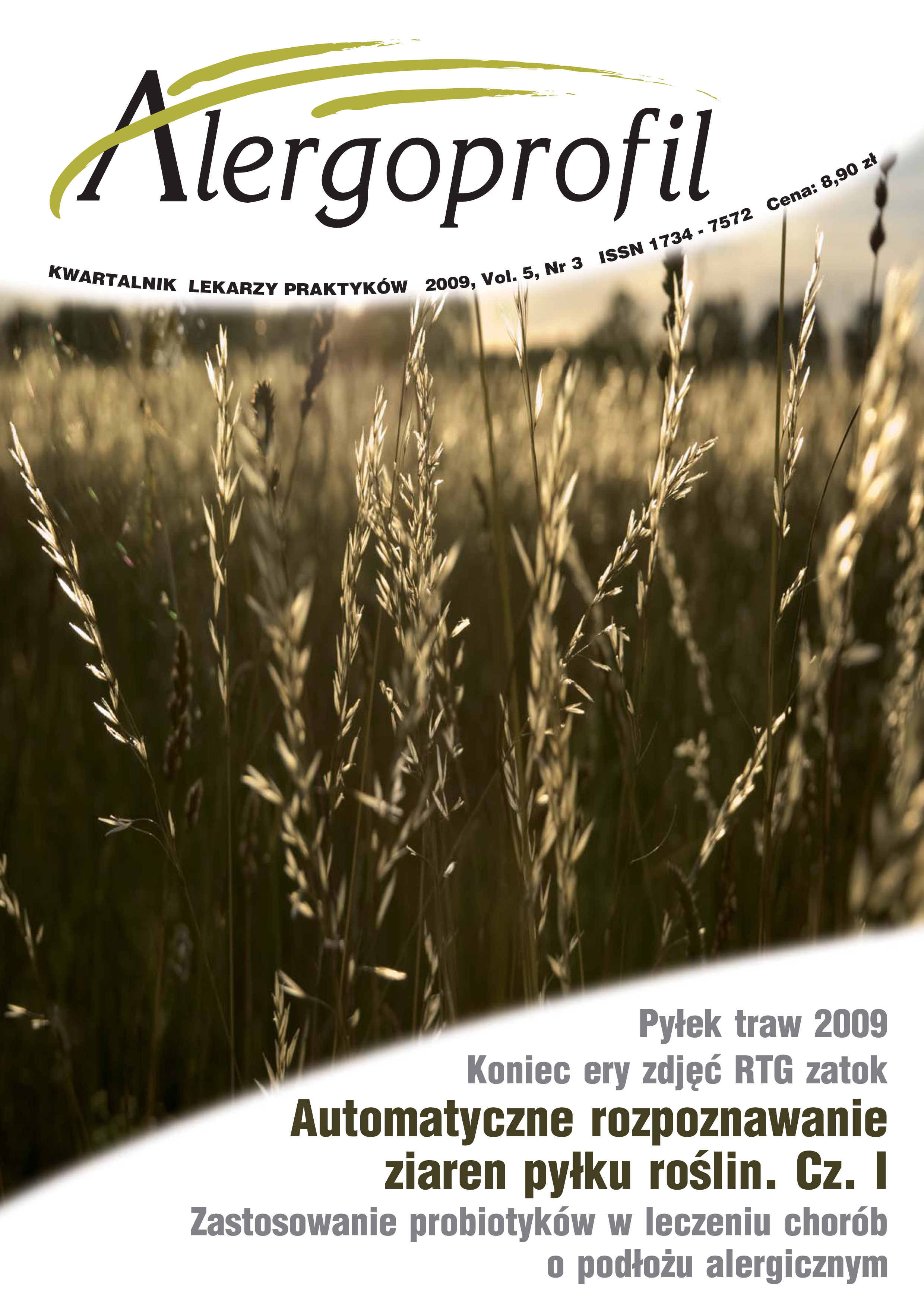Zastosowanie probiotyków w leczeniu chorób o podłożu alergicznym
##plugins.themes.bootstrap3.article.main##
Abstrakt
W pracy omówiono definicje probiotyku, prebiotyku i synbiotyku. Przedstawiono charakterystykę bakterii probiotycznych. Omówiono korzyści, jakie wynikają dla organizmu ludzkiego ze stosowania bakterii probiotycznych. Podkreślono, że probiotyki są coraz częściej stosowane w profilaktyce i terapii chorób alergicznych.
Pobrania
##plugins.themes.bootstrap3.article.details##
Copyright: © Medical Education sp. z o.o. This is an Open Access article distributed under the terms of the Attribution-NonCommercial 4.0 International (CC BY-NC 4.0). License (https://creativecommons.org/licenses/by-nc/4.0/), allowing third parties to copy and redistribute the material in any medium or format and to remix, transform, and build upon the material, provided the original work is properly cited and states its license.
Address reprint requests to: Medical Education, Marcin Kuźma (marcin.kuzma@mededu.pl)
Bibliografia
2. Guidelines for the Evaluation of Probiotics in Food. Raport a Joint FAO/WHO Working Group, London, Ontario, Canada 2002.
3. Health and Nutritional Properties of Probiotics in Food including Powder Milk with Live Lactic Acid Bacteria, Raport of Joint FAO/WHO Expert Consultation. Cordoba, Argentina, 2001.
4. Bielecka M.: Naukowe podstawy stosowania probiotyków. Post. Mikrobiol. 2004, 43(supl. 1): 11.
5. Jeznach M., Zegan M.: Stan i perspektywy rozwoju rynku żywności funkcjonalnej. Wydawnictwo SGGW 2003.
6. Alergie pokarmowe – porady lekarzy i dietetyków. Jarosz M., Dzieniszewski J. (red.). PZWL, Warszawa 2004.
7. Shaternikov V.A., Kuvaeva I.D., Ladodo K.S., Orlova N.G., Vesellova O.L.: Geral and local humoral immunity and intestinal microflora in children with skin manifestations of food allergy. Vopr. Pitan. 1982, 9: 51-56.
8. Loskutova I.E.: Effectiveness of using Maliutka and Malysh aspect propionic-acidophilus mixtures in the combined treatment of congenital hypotrophy. Vopr. Pitan. 1985, 5: 17-20.
9. Trapp C.L., Chang C.C., Halpern G.M., Keen C.L., Gerschwin M.E.: The influence of chronic yoghurt consumption on population of young and elderly adults. Int. J. Immunother 1993, 9: 53-64.
10. Majamaa H., Isolauri E.: Probiotics: a novel approach in the management of food allergy. J. Allergy Clin. Immunol. 1997, 99: 179-185.
11. Salminen S., Bouley C., Boutron-Ruault M.: Functional food science and gastrointestinal physiology and function. Br. J. Nutr. 1998, 80: 147-171.
12. Madara J.L.: The chameleon within: improving antigen delivery. Science 1997, 277: 910-911.
13. Kankaanpaa P., Sutas Y., Arvilommi H., Salminen S., Isolauri E.: Comparison of antiproliferative effects of probiotic cell extracts and glucocorticoids. Gastroenterol. Int. 1998, 11: 139-140.
14. Pelto L., Isolauri E., Lilius E.M., Nuutila J., Salminen S.: Probiotic bacteria downregulate the milk induced inflammatory response in milk-hypersensitive subjects but have an immunostimulatory effect in health subjects. Clin. Exp. Allergy. 1998, 28: 1474-1479.
15. de Simone C., Ciardi A., Grassi A.: Effect of Bifidobacterium bifidum and Lactobacillus acidophilus on gut mucosa and peripheral blood B lymphocytes. Immunopharmacol. Immunotoxicol. 1991, 14: 331-340.
16. Gasser F.: Safety of lactic acid bacteria and their occurrence in human clinical infections. Bull. Inst. Pasteur 1994, 92: 45-67.
17. Wagner R.D., Warner T., Roberts L., Farmer J., Balish E.: Colonization of congenitally immunodeficient mice with probiotic bacteria. Infect. Immun. 1997, 65: 3345-3351.
18. Oggioni M.R., Pozzi G., Valensin P.E., Galieni P., Bigazzi C.: Recurrent septicemia in an immunocompromised patient due to probiotic strains of Bacillus subtilis. J. Clin. Microbiol. 1998, 36: 325-326.
19. Fedorak R.N., Madsen K.L.: Probiotics and prebiotics in gastrointestinal disorders. Curr. Opin. Gastroenterol. 2004, 20: 146-155.
20. Sartor R.B.: Probiotic therapy of intestinal inflammation and infections. Curr. Opin. Gastroenterol. 2005, 21: 44-50.
21. Penner R., Fedorak R.N., Madsen K.L.: Probiotics and nutraceuticals: nonme-dicinal treatments of gastrointestinal diseases. Curr. Opin. Pharmacol. 2005, 5: 596-603

